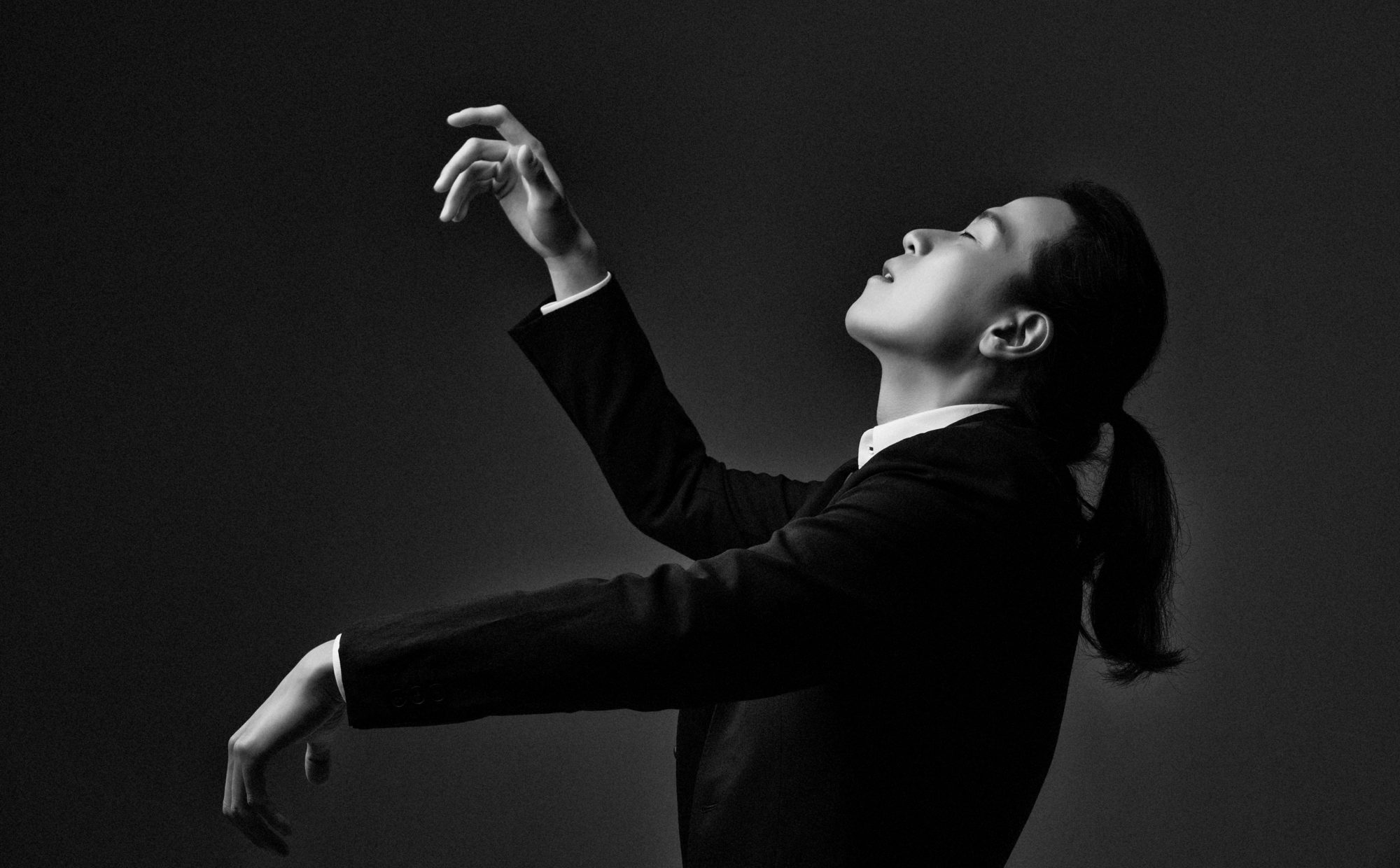Piano Recital with Sung Chang
The contrast was astonishing: in the midst of natural stones and a wide steel-glass-structure in the lobby of the DZ-Bank-Hannover, the recently restored Steinway grand piano of the Chopin Society Hannover was sparkling. There was a pleasant atmosphere of conversation between the bankers of the DZ-Bank-Hannover and the numerous members as well as friends of the Chopin Society accompanied by refreshments. However, during the actual event of the evening, the drink was replaced by attentive silence.
The pianist Sung Chang, who has been awarded international competition prizes, was invited to inaugurate the grand piano shining in new splendor. The excitement of the audience showed, that he succeeded. The programming alone caught people’s attention, since Sung Chang presented pieces that were demanding and appealing in every way. With Beethoven’s’ late piano sonata in A-flat major, op.110 the young pianist proved his musical maturity. His outstanding pianistic abilities made it possible for him to emphasize the many levels of this musical monument, which is shaped by contrasts. In the calm solemnity of the opening movement with musical tension and ‘con amibalitia’, gently and lovingly, Chang mastered the great art of cantabile playing effortlessly. Similarly, he mastered the middle movement, which creates a stark contrast to the first movement with its bizarrely syncopated rhythms and strong dynamic accents.
The focus on the last movement, especially on the fugal part in this piece, is characteristic of Beethoven’s late sonatas. The lamenting first motif, the stirring, poignant fugue as well as the triumphant finale of this movement shaped by great dignity requires a great deal of pianistic ability. Sung Chang accepted this challenge and proceeded to sing to the evening with Schumann’s Fantasy pieces, invoking capricious, fantasizing, interpreting Traumes Wirren (Dream’s Confusions). All eight pieces in this ingenious piano cycle have a particular appeal and Sung Chang knew exactly how to communicate these precious pieces to the audience.
The Scherzi are amongst Chopin’s most important piano works; a symbiosis of passionate virtuosity and profundity. Chang played the third and the fourth Scherzo and impressed with his octave technique and sonorous sound with poetic colors. A gigantic interpretation of La Valse was the big finish of the evening. The orchestral writing in this piece shows the entire musical palette of the waltz, from brilliant virtuosity to dark, dramatic explosions, and makes the intensity almost tangible. Sung Chang was not afraid to take risks, played with passion and full dedication to the music, yet with full control.
He was forced to give an encore. His hint to the heavily tired arm was of no use – there was no end to the applause, and so the listener was treated to a movement of one of the beautiful Haydn Sonatas, the Allegro from no.13 in E-major.
The Hamburger Abendblatt wrote on 11/10/2011: “Sung Chang engraved, carved, his fingers danced on the keys, warbled, danced on the keys, trilling, skipping, hurrying. The scholarship recipient of the Yamaha Music Foundation 2011 can do it furiously and loudly flaring up. Yet also pianissimo, meticulously planned, with a lot of feeling, held back, to let the fine expression shine through. His finale of the Lisztian composition gives Goosebumps.’
Text: Okka Mallek – Hannover, 09/30/2012
http://www.chopin-hannover.de/2012/konzert6.html
Sung Chang Gives Goosebumps
The Pianist shows a great sense for the passion of the composer Franz Liszt in Norderstedt
Norderstedt. Slowly he prepares to start. His hands glide towards the keyboard as if in slow motion. His back tenses up like a cat ready to pounce on a mouse. And there it is – the first note. Abrupt silence. The second note. And then Sung Chang unravels Liszt’s Sonata in b minor in front of the audience in the sold out “TriBühne” hall with vehement playing. This sonata does not actually have any movements, which is exactly how the 24-year-old pianist from Korea perceives it. He tears through the Allegro energico and the Andante sostenuto. He uses the staccato to create harsh accents. But Sung Chang did not only show his great technical ability in this sonata. His playing revealed a depth and sensitivity for the passion of the composer, whose piano works only Liszt himself could play at his time.
Sung Chang engraved, carved, his fingers danced on the keys, warbled, danced on the keys, trilling, skipping, and hurrying. The scholarship recipient of the Yamaha Music Foundation 2011 can do it furiously and loudly flaring up. Yet also pianissimo, meticulously planned, with a lot of feeling, held back, to let the fine expression shine through. His finale of the Lisztian composition gives Goosebumps.
The audience is thrilled. Even before the intermission the audience got up to applaud him. Sung Chang approaches the rarely performed sonata in D major by Joseph Haydn with playful ease. Sung Chang is someone who understands what he plays. Of course, but Liszt’s Liebestraum no.3 (love dream) did not come across so lovingly. He saved that feeling for the two variations of Liszt’s Rhapsodie Espganole, in which he highlights the folk song passages.
At the end the artist is completely exhausted, but he cannot help himself. As an encore, he chose Liszt’s Liebestraum again, this time with surprising improvisations. He is someone whose fee the Norderstedt concert managers will probably not be able to afford in a few years. Once again the concert series ‘Cognito’, initiated by Chiro Fujito from the Yamaha Music Foundation, confirmed their reputation as a stepping point for young music talents.
http://www.kyopo.com/se_forum.php?c=topic&op=index&cid=26&tid=336978
